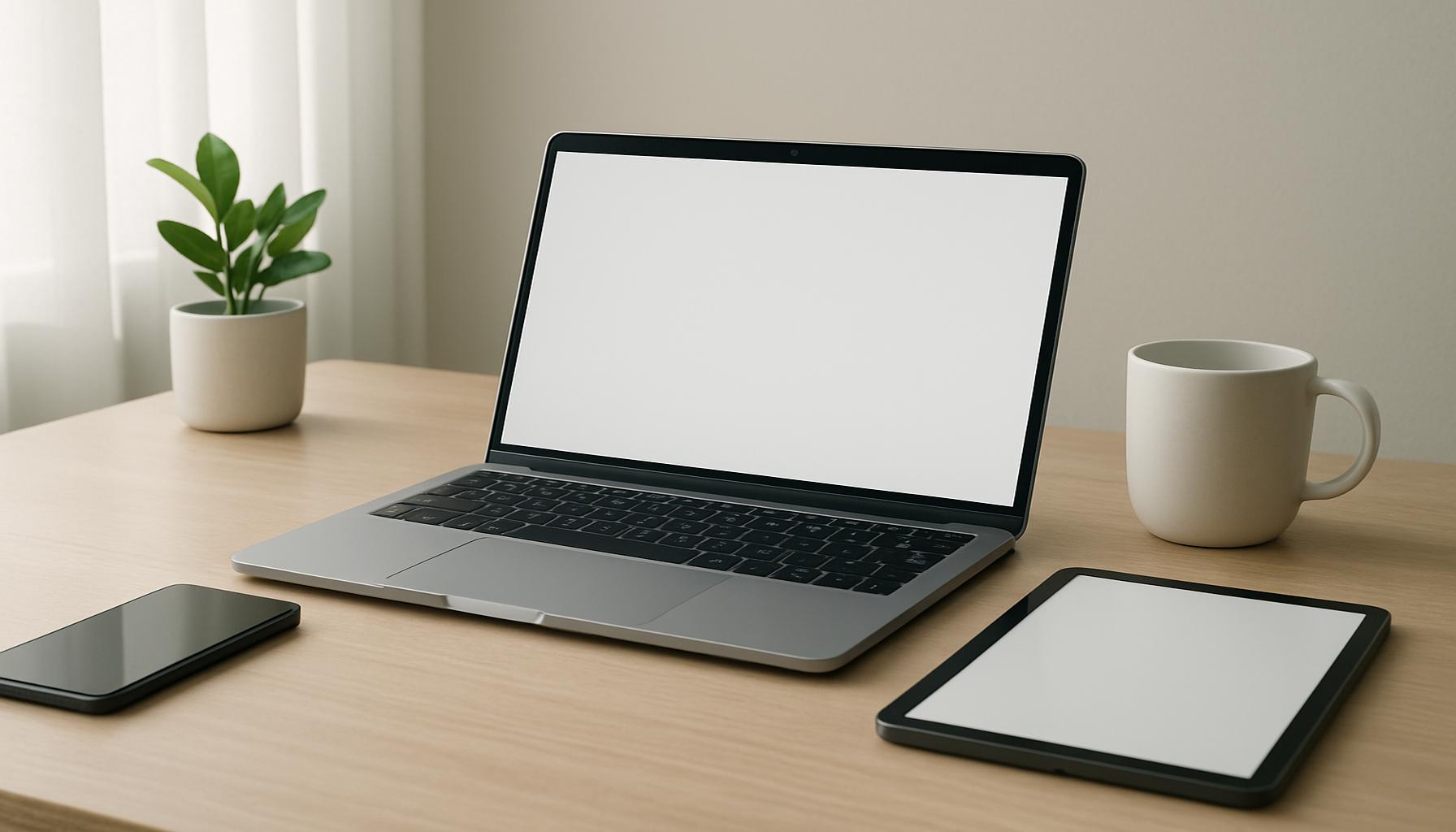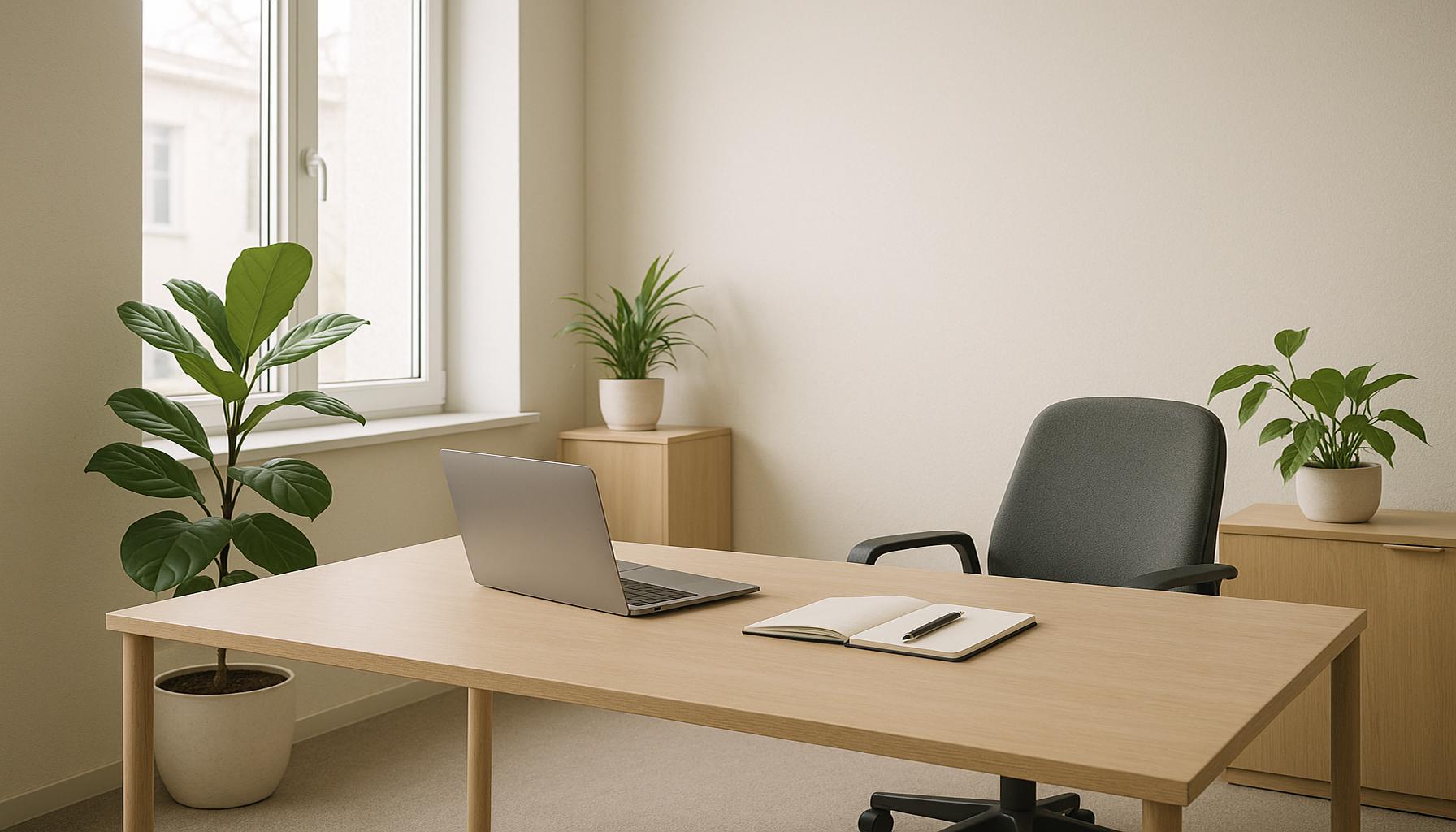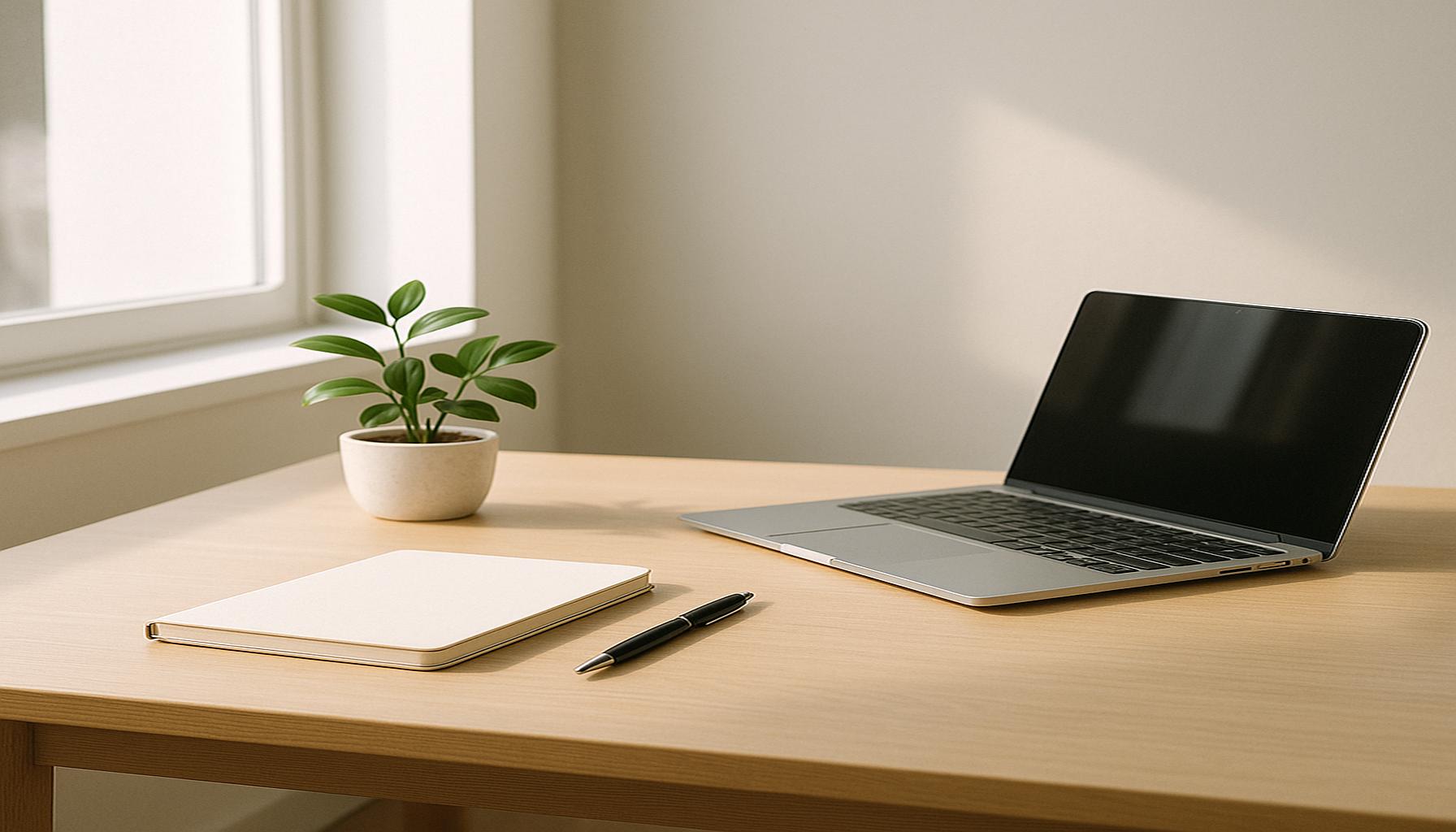Minimalist Organization Strategies to Maximize Personal Productivity

Embracing Minimalist Strategies for Enhanced Clarity
In an era characterized by rapid technological advancements and an ever-growing influx of information, it can be all too easy to feel weighed down by distractions. Many individuals struggle to find clarity amidst the clutter that fills their physical spaces and mental landscapes. As a result, there is a growing trend towards minimalist organization strategies, which offer practical solutions for decluttering and enhancing overall effectiveness. Not only do these techniques facilitate the organization of our environments, but they also help streamline our thoughts, creating a synergy that fosters improved personal productivity.
Core Principles of Minimalist Organization
Minimalism transcends mere aesthetics; it embodies a philosophy that encourages the simplification of life by honing in on what truly matters. Here are several foundational principles that can guide individuals in applying minimalist strategies:
- Simplification: This principle involves a keen focus on the essentials and the conscious removal of the unnecessary. For example, rather than allowing every piece of paper to clutter your desk, assess what requires action and archive the rest digitally.
- Intentionality: Being deliberate about how you spend your time and resources can have profound impacts. Creating a prioritized to-do list, for instance, can minimize distractions and foster a more structured approach to daily activities.
- Orderly Environment: An organized workspace contributes significantly to productivity. For example, keeping only essential items on your desk can help reduce visual clutter, enabling a clearer mental state and boosting concentration on tasks.
As individuals integrate these minimalist strategies into their daily lives, they frequently notice significant enhancements in their productivity levels. An organized workspace not only improves aesthetics but also cultivates a more conducive atmosphere for work, which can resonate positively with an individual’s work ethic. The advantages of adopting minimalism are manifold:
- Increased focus on the tasks at hand, aided by reduced distractions in both physical and digital spaces.
- Reduced stress stemming from chaotic environments, leading to a calmer mindset that can enhance creativity and problem-solving.
- Better time management, which allows for more accomplished daily goals and an overall sense of fulfillment in one’s work.
In delving deeper into minimalism, one may uncover that simplicity serves as a powerful tool for achieving more with less. Whether it’s through decluttering a workspace, refining task lists, or embracing a more purposeful way of living, adopting minimalism can be a transformative journey. Prepare to reshape your approach to productivity and discover the profound impact that a minimalist lifestyle can have on both work and personal well-being.
DISCOVER MORE: Click here to enhance your productivity

Transformative Techniques for a Streamlined Workflow
As individuals seek to embrace minimalist organization strategies, it is essential to understand the practical applications that can be seamlessly integrated into daily routines. The goal is to cultivate an environment that not only looks uncluttered but also functions at peak efficiency. Here are several techniques that can help you maximize personal productivity through minimalism:
1. Declutter with Purpose
To start your journey towards minimalism, it is crucial to conduct a thorough declutter of your physical and digital spaces. This entails elements as simple as a desk tidy-up to more complex digital file management. Begin by evaluating everything in your workspace:
- Evaluate Usefulness: Gather all items and assess their functionality. Ask yourself if each item enhances your productivity or merely serves as decoration.
- Digitization: Embrace digital tools for managing work. Convert paper documents into digital files, utilizing cloud storage systems to reduce physical clutter while maintaining easy access.
- Regular Maintenance: Schedule regular intervals to reassess what you have. Day-to-day clutter can accumulate, so commit to brief weekly sessions to keep items in check.
2. The Power of Prioritization
Minimalist organization inherently promotes intentionality, where prioritization becomes a fundamental aspect of your tasks. Creating a clear outline of daily objectives can help maintain focus:
- Daily Top Three: Each morning, jot down the three most important tasks that you must accomplish. This method narrows your focus and allows you to tackle critical items without feeling overwhelmed.
- Time Blocking: Allocate specific blocks of time to different tasks. This technique not only keeps you on track but also prevents the mental strain of multitasking.
- Review and Reflect: At the end of each day or week, take a moment to review your accomplishments. Reflection fosters an understanding of where your time went and how to better manage it moving forward.
3. Minimalist Mindset in Decision-Making
Embracing a minimalist mindset extends beyond physical organization; it allows for clearer decision-making. When faced with choices, consider these strategies:
- Limit Options: When confronted with too many choices, decision fatigue can set in. Limiting your selections—whether in tasks or even in products you use—can enhance clarity and efficacy.
- Simplify Goals: Ensure your objectives are clear and attainable. Having too many goals can propagate distraction; instead, condense them into focused, manageable targets.
- Act Quickly: Adopt a policy to make decisions promptly. The sooner you act, the less time you spend mulling over options, freeing your cognitive resources for more important matters.
The integration of these minimalist organization strategies can lead to a significant boost in personal productivity. By fostering simplicity in both your physical environment and mental processes, you pave the way for enhanced clarity and effectiveness. This transformative journey towards minimalism not only refines your approach to daily tasks but can also serve as an ongoing blueprint for personal and professional growth.
| Advantages | Key Features |
|---|---|
| Enhanced Focus | Eliminating distractions allows individuals to concentrate on essential tasks, significantly increasing productivity. |
| Clarity of Purpose | A minimalist approach helps clarify priorities, enabling individuals to identify what truly matters in their work and personal lives. |
Incorporating minimalist organization strategies into daily routines can lead to profound changes in personal productivity. By focusing on fewer tasks with greater significance, individuals can avoid the overwhelming feeling that often accompanies a cluttered schedule. Furthermore, minimalist techniques advocate for the use of streamlined tools and systems that cater specifically to essential functions, reducing unnecessary complexity.When you simplify your workspace and digital environment, your mind can breathe, allowing for a creative and productive flow that is often stifled by excessive clutter. Emphasizing efficiency over quantity is a pivotal aspect of maximizing personal productivity, where the core philosophy involves leveraging minimalism to create more impactful work outcomes. Diving into the various techniques available can unveil practices that align perfectly with one’s lifestyle, thus enhancing the overall effectiveness of one’s routines.
DISCOVER MORE: Click here to dive deeper
Essential Frameworks for Lasting Productivity
Implementing minimalist organization strategies is not just a one-time effort but rather a commitment to ongoing improvement. With the right frameworks in place, you can cultivate agile efficiency in your daily life. Here are additional strategies that enhance your productivity while maintaining a minimalist approach:
4. Streamlined Communication
Effective communication often gets buried under layers of tools and platforms, leading to unnecessary distractions. A minimalist approach to communication can significantly enhance productivity:
- Choose One Main Platform: Limit your communication to one primary platform for work-related interactions. Whether it’s email, Slack, or Microsoft Teams, reducing reliance on multiple channels can streamline conversations and make it easier to track discussions.
- Set Communication Norms: Establish a guideline for response times and preferred communication methods. By agreeing on norms, you reduce interruptions and allow your team to focus on their tasks without the nagging anxiety of unread messages.
- Use Templates and Scripts: Create templates for common responses or routine communications. This reduces time spent composing messages and keeps language consistent across any outreach efforts.
5. A Minimalist Task Management System
Adopting an effective task management system is crucial for a streamlined workflow. A minimalist system can keep your to-do list from becoming burdensome:
- One List Approach: Instead of maintaining separate to-do lists for various aspects of your life, consolidate everything into one comprehensive list. This reduces mental load by ensuring you’re aware of all tasks, eliminating the need to switch contexts.
- Weekly Planning Sessions: Dedicate time each week to organize your tasks. This strategy allows you to prioritize efficiently while maintaining a realistic workload for the forthcoming days.
- Application Utilization: Leverage minimalist task management applications like Todoist or Notion. These tools can help you keep everything organized while offering features that enhance productivity without complex setups.
6. Designated Zones for Activities
Creating dedicated zones for specific tasks can enhance focus and minimize distractions. A well-structured environment supports your objectives:
- Workspace Separation: If you work from home, designate one area solely for work-related tasks. This physical separation can mentally cue you to focus when you enter the workspace, encouraging structured work habits.
- Minimize Distractions: In your designated zones, limit items that could divert your attention. Keep only what you need at hand—this could mean removing non-essential decorations or tech gadgets.
- Incorporate Break Spaces: Just as a workspace should be intentional, so should areas for relaxation. Designating a space for breaks can support mental rejuvenation without the physical disarray that comes from working in unpredictable environments.
The integration of these advanced minimalist organization strategies contributes not only to personal productivity but also lays the groundwork for sustainable work habits. By cultivating a clear framework around communication, task management, and dedicated spaces for activities, you enhance your ability to focus deeply and work efficiently. Embracing such practices fosters an enriched environment that can connect the dots between minimalism and maximum productivity, enabling you to fulfill your potential with relative ease.
DISCOVER MORE: Click here to learn about minimalism
Conclusion: Embracing Minimalism for Enhanced Productivity
In today’s fast-paced world, where distractions abound and tasks multiply, adopting minimalist organization strategies can be a game changer for individuals seeking to maximize their productivity. As we’ve explored, implementing frameworks such as streamlined communication, a cohesive task management system, and designated activity zones not only declutters your environment but also simplifies the mental processes necessary for achieving success.
By prioritizing a singular communication platform, you streamline exchanges and reduce the cognitive load associated with juggling multiple tools. A unified task management system empowers you to capture and prioritize all responsibilities in one place, while designated spaces foster focus, encouraging a clearer mind and deeper engagement with your work.
As you embark on this minimalist journey, consider the profound impact of intentionality. Each strategy—whether it’s removing unnecessary distractions or creating environments conducive to focus—serves to reinforce the principle that less can indeed mean more. By eliminating the non-essential, you create room for creativity, clarity, and ultimately, productivity.
As you implement these minimalist organization strategies, remember that the goal is not merely to do more, but to do what matters most efficiently. Embrace this mindset, and watch as it transforms your work habits and enhances your ability to thrive in both personal and professional arenas. By cultivating a minimalist lifestyle, you might just unlock a more productive, purposeful, and fulfilling life.


